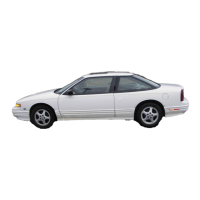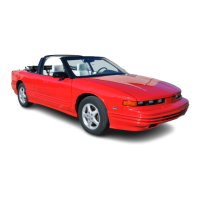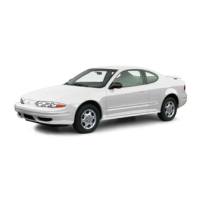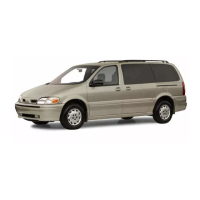SECOND
(2):
This
position gives you more power but
lower fuel economy. You can
use
SECOND
(2)
on
hills.
It
can help control your speed as you
go
down steep
mountain roads, but then
you
would also want
to
use
your brakes
off
and on.
FIRST
(1):
This position gives
you
even more power
than
SECOND
(2)
but lower fuel economy. You can use
it
on
very steep hills, or in deep snow or mud. If the shift
lever
is
put in
FIRST
(l),
the transaxle won’t shift into
first gear until the vehicle
is
going slow enough.
NOTICE:
Don’t drive in SECOND
(2)
for more than
25
miles
(41
km) at speeds over
55
mph
(88
km/h),
or you can damage your transaxle.
Use AUTOMATIC OVERDRIVE
(0)
or
THIRD
(3)
as much as possible.
Don’t shift into SECOND
(2)
unless you are
going slower than
65
mph
(105
km/h),
or you
can damage your engine.
NOTICE:
If
your front wheels can’t rotate, don’t try to
drive. This might happen
if
you were stuck in
very deep sand ormud or were up against a
solid object.
You
could damage your transaxle.
Also,
if
you stop when going uphill, don’t hold
your vehicle there with only the accelerator
pedal. This could overheat and damage the
transaxle. Use your brakes or shift into PARK
(P)
to hold your vehicle in position on
a
hill.
2-20

